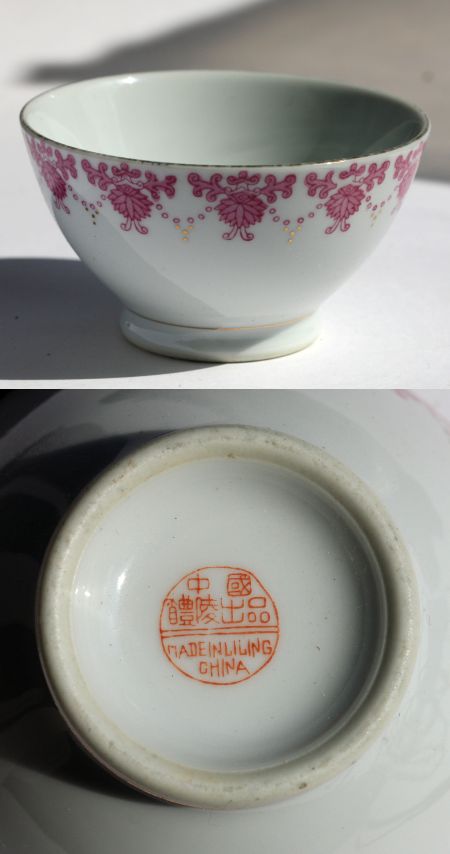
Liling Porcelain Company.
Modern Liling folks ware from the second half of the 20th century, ca. 1980.
Photo: Jan-Erik Nilsson 2015
Archaeological finds and studies reveal that Liling started firing potteries no later than the Han dynasty (206 BCE-220 CE). Celadon and white porcelain excavated from Liling kiln complex date back to the Song and Yuan dynasties (960-1368).
In most aspects the Liling Kiln in Hunan Province is a Qing dynasty kiln area, who rose to fame during the early 20th century by its "underglaze wucai porcelain", created during the first decades of the 20th century in cooperation with Japanese potters. This special ware took three firings to accomplish but was a very modern ware - an underglaze color decoration. Dish washer proof long before the dishwasher was invented, or at least well abreast.
From the Jiajing period and onwards, the number of kilns steadily increased in this area, until 1903, when the area had 480 ceramic factories and more then 2,000 dragon kilns producing mainly blue and white porcelain. Production seems to have continued into the early republic period.
One of the pioneering companies was Hunan Ceramics Company established in 1906 by Xiong Xiling, a native of Western Hunan and an advocator of Westernization Movement at the end of the Qing Dynasty. It was one of the earliest modern enterprises in Hunan. Five colors underglaze decorated wares made by the Hunan Ceramics company won many gold prizes at international expos and porcelain made in Liling became famous, with its prosperity even exceeding that of Jingdezhen at the time. The company ceased its operations in 1930.
In 1905, the then Qing government official Xiong Xiling (1870-1937) (who later became the premier of the Republic of China [1912-1949]) traveled to Japan to learn advanced techniques of porcelain manufacture in the process of modernizing Chinese industry and commerce. Having successfully secured funding from the Empress Dowager Cixi (1835-1908) for the development of the porcelain industry, he established schools, companies, and official kilns in Liling, and created a new underglaze polychrome porcelain in 1908.
Between 1909 to 1915 Liling porcelain was exhibited at four occasions in China and abroad, in Wuhan Industrial Association, Nanyang Industrial Association. In Italy and at the Panama-Pacific International Exposition in San Francisco, USA, in 1915, the Liling underglaze polychrome received the gold medal and was honored as "the peak of oriental ceramic art".
In 1918 Hunan Porcelain Company was destroyed by Bing Huo after which it slowly recovered, although because of the chaotic state in China at the time, fine polychrome underglaze porcelain had a problem finding a market. After 1930, the Liling polychrome underglaze porcelain basically ceased production.
The production was restored in 1956 when the State Council established the Liling Porcelain Company by advancing 8 million yuan towards the restoration and expansion of the production of polychrome underglaze at the Liling kiln. Under government protection the production seems to have continued until today.
It is difficult to tell the difference of the blue an white pieces made here, from Jingdezhen wares, but the multicolored underglaze porcelain stands out and helps in identifying the wares.
A